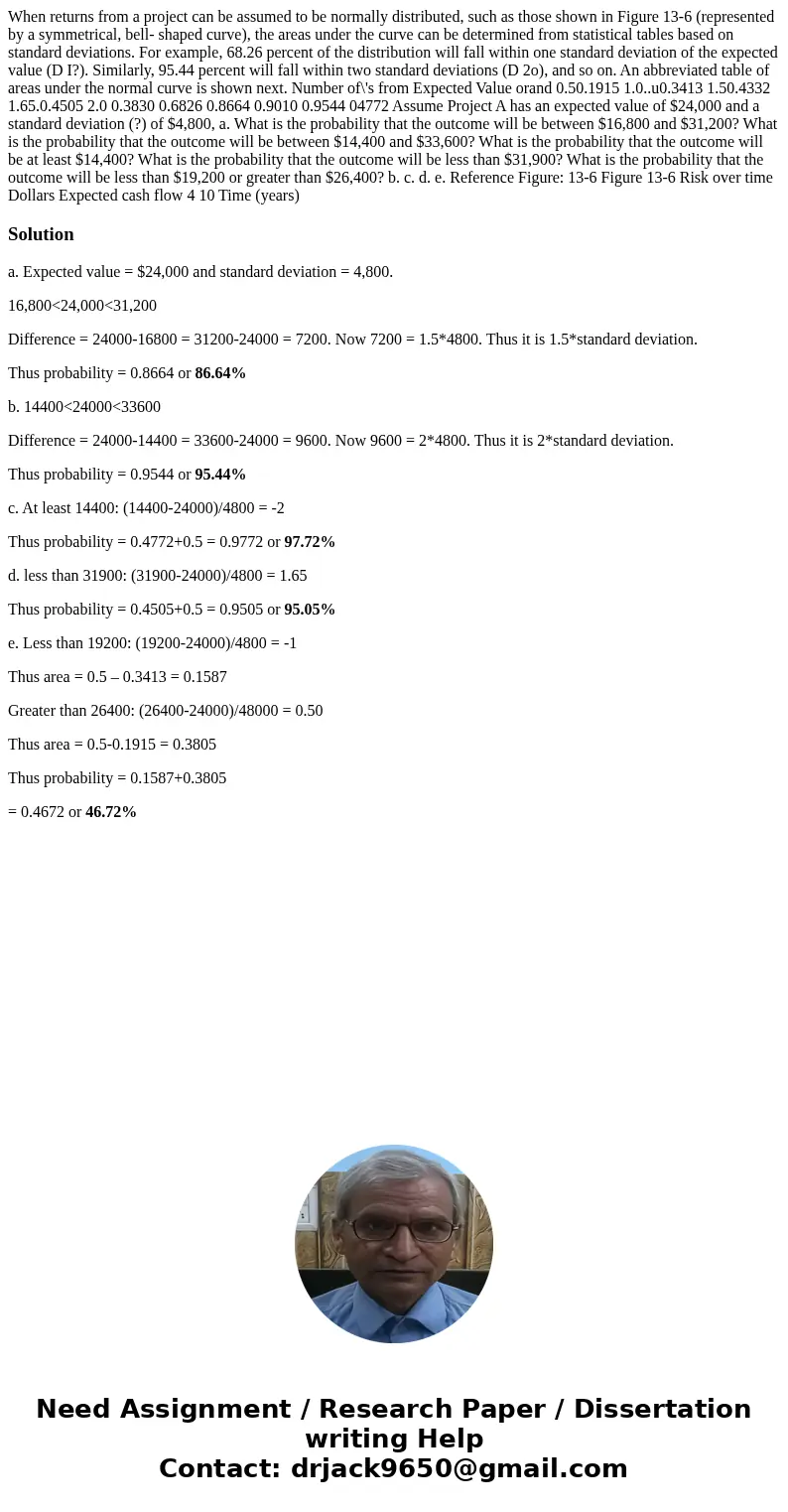When returns from a project can be assumed to be normally distributed, such as those shown in Figure 13-6 (represented by a symmetrical, bell- shaped curve), the areas under the curve can be determined from statistical tables based on standard deviations. For example, 68.26 percent of the distribution will fall within one standard deviation of the expected value (D I?). Similarly, 95.44 percent will fall within two standard deviations (D 2o), and so on. An abbreviated table of areas under the normal curve is shown next. Number of\'s from Expected Value orand 0.50.1915 1.0..u0.3413 1.50.4332 1.65.0.4505 2.0 0.3830 0.6826 0.8664 0.9010 0.9544 04772 Assume Project A has an expected value of $24,000 and a standard deviation (?) of $4,800, a. What is the probability that the outcome will be between $16,800 and $31,200? What is the probability that the outcome will be between $14,400 and $33,600? What is the probability that the outcome will be at least $14,400? What is the probability that the outcome will be less than $31,900? What is the probability that the outcome will be less than $19,200 or greater than $26,400? b. c. d. e. Reference Figure: 13-6 Figure 13-6 Risk over time Dollars Expected cash flow 4 10 Time (years)
a. Expected value = $24,000 and standard deviation = 4,800.
16,800<24,000<31,200
Difference = 24000-16800 = 31200-24000 = 7200. Now 7200 = 1.5*4800. Thus it is 1.5*standard deviation.
Thus probability = 0.8664 or 86.64%
b. 14400<24000<33600
Difference = 24000-14400 = 33600-24000 = 9600. Now 9600 = 2*4800. Thus it is 2*standard deviation.
Thus probability = 0.9544 or 95.44%
c. At least 14400: (14400-24000)/4800 = -2
Thus probability = 0.4772+0.5 = 0.9772 or 97.72%
d. less than 31900: (31900-24000)/4800 = 1.65
Thus probability = 0.4505+0.5 = 0.9505 or 95.05%
e. Less than 19200: (19200-24000)/4800 = -1
Thus area = 0.5 – 0.3413 = 0.1587
Greater than 26400: (26400-24000)/48000 = 0.50
Thus area = 0.5-0.1915 = 0.3805
Thus probability = 0.1587+0.3805
= 0.4672 or 46.72%

 Homework Sourse
Homework Sourse